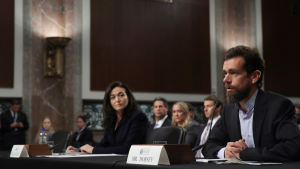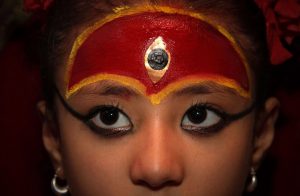In 1493, on his second voyage to the Americas, Christopher Columbus discovered Puerto Rico, an island that he named San Juan Bautista. On his first trip, Columbus, as we know, discovered La Española (Hispaniola), which is today the countries of Haiti and the Dominican Republic. In a failed attempt to reach La Española on his second trip, Columbus landed on Puerto Rico, where he was received by the Taíno Indians, who were of the same ethnic group as the people of La Española and the other islands in the Caribbean.1
Months after reaching the Island, the Spaniards started the process of colonizing the Taíno Indians, led by Juan Ponce De Leon, who was one of the conquistadors that came with Columbus. Later, in 1508, De Leon became the first governor of San Juan Bautista. During this process of colonization, the Taíno Indians did not show resistance because they believed the Spaniards were gods. The reason they saw the Spaniards as gods was because there had been a Taíno legend that spoke of a time when gods were going to rise from the water to give salvation to the Taíno. This legend facilitated the process of colonization for the Spaniards, since they did not encounter any native resistance. Within a short time they had created villages and colonies. By the beginning of the 1500’s, the Taíno natives were working in gold mines and plantations. In 1514, the Taíno decided to take matters into their own hands and rebel against their Spanish overlords. What resulted was one of the most brutal genocides in Latin American history. More than 25,000 Taíno Indians were murdered by the Spaniards on the Island of San Juan Bautista. This means that 85-90% of their population had been killed at the hands of the Spaniards. After the rebellion, the Spaniards noticed that the natives that had survived were not enough to fulfill their labor requirements. They decided to search for a new work force.2
After the massacre of 1514, the Spaniards noticed that they needed a new “work force,” as they called their slaves; so in 1518 they started importing African slaves from the Gulf of Guinea. The slaves started to reach the island later that year, and became the new “work force” of the Spaniards along with the small number of Taíno Indians that had survived the massacre. This caused more problems, since the Spaniards and the Africans brought a variety of diseases to the Island, such as small-pox and measles. Approximately two million Taíno Indians that lived on the islands of the Caribbean died from these diseases. By the late 1500’s there were no more Taíno Indians left on the island of San Juan Bautista; only the children of those who intermarried with the Spaniards and Africans survived. Of course, the Taíno, Africans, and Spaniards intermarried through time, and this is why Puerto Ricans today have such a diverse racial heritage; but the original Taíno racial group became extinct by around 1600. By that time the island of San Juan Bautista had become one of the most important colonies in the Caribbean. The Spaniards now had a way to export their products to the rest of the Caribbean and Latin America through this island, giving them an economical advantage. In less than thirty years the Spaniards took the Taíno land, men, women, and children, and virtually erased a whole population from the face of the earth. Most people consider Christopher Columbus as one of the greatest explorer to ever live, and as a hero of sorts, but have they taken into consideration the many civilizations in the Americas that have been affected by him? Not only the Taíno population, but also the Aztecs, the Incas, and many other societies throughout the Americas were affected significantly by this Columbian moment in history.3
- Roberto Marquez, “Sojourners, Settlers, castaways and creators: A recollection of Puerto Rico past and Puerto Rico present,” Massachusetts Review 36, no. 1 (1995): 94. ↵
- Robert M. Poole, “What Became Of The Taíno?” Smithsonian 42, no. 6 (October 2011): 58. ↵
- Byron Cannon, “West Indian Uprisings,” Salem Press Encyclopedia (January 2016): 583-586. ↵



64 comments
Edith Santos Sevilla
Reading this story how the natives did not resist the colonization because they thought the spaniards were gods is very interesting to me. It shows how the natives had to idea of the world outside theirs. At first the colonizers were tolerant, but after the massacre they had other problems to look at like who was going to work. At the beginning of the article I thought that the story of colonization was different than when the English colonized, but after killing more than half of the population, it did not show a big difference between between the two colonizers. Within the article it was also included a description and background why Puerto Rico has such a diversity and how it was the only way for people to survive, it was to have a kid with African and Native background to prevent the diseases.
Kristina Tijerina
I feel like many people praise Christopher Columbus for finding the new land without thinking about what he did to actually get it. Nobody thinks or talks about the many deaths that came into play when Christopher Columbus decided that he ruled the land that was previously the Taino Indians. It wasn’t right for the Spaniards to start colonizing in land that wasn’t even theirs to begin with, and then kill a large portion of the Taino Indian population as soon as they start to try and take back their own land. I think it’s also wrong that Columbus decided that he should use the leftover population as slaves and then bring African Americans to be slaves as well. I genuinely don’t think he deserves any of the recognition that he has.
Thalia Romo
I didn’t know that Spaniards wiped out nearly all of the Taino Indians population. It’s crazy to think that a few centuries ago, a whole racial group can go extinct, with only the children containing a portion of the DNA to pass onto future generations. Having grown up in America, you hear of Christopher Columbus being glorified for “expanding the world” and settling on “new land”. This article does a great job at showing just how destructive Christopher Columbus’ actions were to many different civilizations.
Paul Garza
I love this article, especially the last paragraph! The idea that Christopher Columbus is worthy of commemoration is so wrong in my opinion. Christopher Columbus did not discover the americas, he was not the first human being on the American lands of the north, central or even south. I credit Christopher Columbus with taking advantage of indigenous people of these lands and manipulating them, all to bring “civilization”. This article speaks a heavy truth about Christopher Columbus and the rest of the world is slowly catching on, for example there are 55 cities that have replaces Columbus Day with indigenous peoples’ day.
Yazmin Garza
I recently read the article about the Aztec people being easily conquered by the Spanish conquistadors because their leader, Montezuma, believed that the man leading the Spanish conquistadors, Cortez, was a god, and knowing that this type of misunderstanding that led to a genocide of Mesoamerican people happen not once, but twice is extremely frustrating. It seems that the Spanish were constantly taking advantage of the natives’ religious beliefs.
Makenzie Santana
I had actually forgotten that Columbus had discovered Puerto Rico, and being Puerto Rican myself, it was interesting to read this article learning the reason why my heritage has such diversity within our culture, and our genetic appearance. It’s sad to know that the Spaniard we the ones who had committed horrible actions on many of the islands along the Caribbean sea.
Ryan Estes
I love that you wrote this article. I really do. Because so many people mistakenly believe that Columbus discovered the Americas. We even have a holiday named after him! I love that you mentioned this at the end, because it’s important to know the truth. Columbus didn’t conquer peacefully. He was a ruthless leader who, like the article says, murdered an entire population. I do not get why us Americans celebrate him, but there’s not much I can do about it.
Angel Torres
What occurred on the island San Juan Bautista is devastating. The Taino Indians believed the Spanish colonizers were gods due to an old legend, however, the Taino Indians would soon realize the Spanish were no gods. Its tragic how a whole population was eradicated from the face of the earth through war, disease, and exploitation. The article was very interesting along with the topic chosen, I wish I could have read a bit more.
Camille
The Taínos were not extinct, just written out of History by those who conquered. This information is not updated.
Luke Lopez
This was a very interesting article on Christopher Columbus and the discovery of Puerto Rico. It is unfortunate that the vast majority of the Taino Indians were killed, because they rebelled against the Spaniards. The Taino Indians also died from diseases that the Spaniards and Africans brought to their island. Overall, this was a great article that detailed Christopher Columbus’ arrival in the Americas.
Sofia Resendiz
Reading this article was interesting for I learned the early history of Puerto Rico. It is so tragic that every mistaken “discovery” made by Christopher Columbus caused the societies and population of many peoples. It is sad that throughout the years the Taino Indians were wiped out and were not able to survive as a society in the land that originally was theirs.